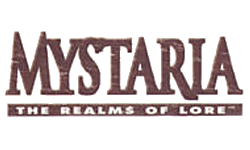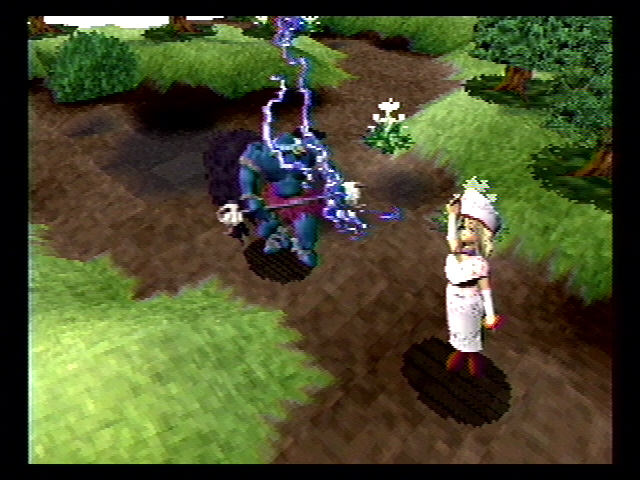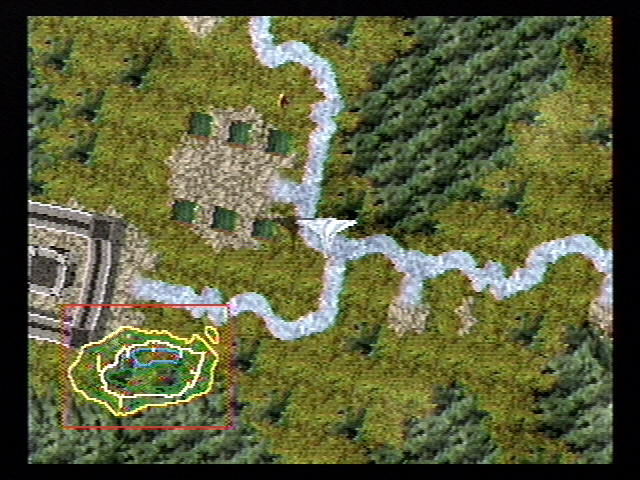|
|

|
BATTLE SYSTEM
|

|
INTERACTION
|

|
ORIGINALITY
|

|
STORY
|

|
MUSIC & SOUND
|

|
VISUALS
|

|
CHALLENGE
|
Average
|
COMPLETION TIME
|
30 Hours
|
|
OVERALL
3.0/5
|
Rating definitions
|
|
|
Mystaria: The Realms of Lore, also released to retail under the name Blazing Heroes, is a game probably remembered by few. It never garnered much attention, and when one thinks of strategy RPGs for the Sega Saturn, they're more apt to recall Shining Force III, the apex of Sega's long-running franchise, or Working Designs' cult classic Dragon Force. And outside of niche SRPG enthusiasts, critical darlings like Team Andromeda's Panzer Dragoon Saga and Treasure's action RPG brawler Guardian Heroes tend to get much of the acclaim. With so many heavy-hitters, it's easy to forget about poor little Mystaria.
Its story certainly isn't a memorable one. After the fall of the queendom of Queensland to the east's evil Emperor Bane, the young Prince and his retinue of soldiers attempt to rescue the bewitched ruler. Unfortunately but expectedly, they're no match for the master magician, and as they confront him, he sweeps a wave of flames across the battlefield, wiping out his own troops in addition to almost killing the Prince. But the hero escapes, along with a captured ninja survivor of Bane's army, and the rebellion lives to see another day. Joining up with the ninja, the Prince begins a campaign to save Queensland, stop the emperor and his elite henchmen, and defeat a much greater evil than Bane himself by uniting just the right number of heroic souls, gathered from across the continent.
 Shocking
Shocking
|
|
The above surely sounds entirely generic, and it is -- there's nothing noteworthy, memorable, or even remotely special about the story contained within Mystaria. Poorly personified archetypal characters dot the cast, from the noble and determined prince to the innocent Blondie priestess to the veteran archer. There's a pirate, a blue-armored dragon knight, and a hermetic wiseman. The villains aren't much better, with an adversarial team led by the evil emperor and supported by figures such as a cruel but vaguely honorable ninja master and a treacherous magician. And as these bland characters progress through the "twists" and "turns" of the game's story, there's almost a desire to go down a checklist and mark off the cliches littering the tale -- rise of an ancient evil? Check. Far-off land shrouded in darkness? Got it. Any more cliches? They're all here.
What's even worse is that Mystaria is cursed with what could well be one of the worst translations ever typed up for a video game. While the glitchy text in games such as Final Fantasy VII and Final Fantasy Tactics is often mercilessly mocked, these tales can't hold a candle to Mystaria in being truly gaffe prone. Stilted dialogue is bad enough, but the game relates its vague and stereotypical "mythology" with all the clarity of a chunk of granite -- dates are confused, names are mixed up, and general confusion is the order of the day. It's almost a good thing that the story is so basic, for if a gamer really had to get a grasp on the so-called legends on display here, they really would be left scratching their heads in bewilderment.
Unfortunately, the game's graphics fare just about as well as the story. Mystaria is early era polygon in all its dated glory. Everything is blocky, chunky, and clunky -- movement and attack animations look downright bad, and spell effects aren't much better; terrain, meanwhile, is lacking in detail and aesthetic quality. All for the sake of 3D, right? And while other poor efforts at polygonal graphics, such as Final Fantasy VII and Shining Force III, somewhat mitigate their technical offenses with excellent artistic direction, not so Mystaria! The art is devoid of style and personality, as tasteless a meal as the so-called grand and epic story. It would've been possible, if somewhat difficult comparatively, to consider the graphics acceptable when the game was first made. They simply do not, however, even approach the status of holding up today.
 Capture the Flag
Capture the Flag
|
|
Never fear; it's not all bad news. The game's musical score, though short, is of a surprising level of quality in comparison to the otherwise poor production values on evident display. The introductory theme is surely the strongest piece, with a wavering usage of echoing woodwind synth that has an unusual and very nice sound. Woodwinds are a leading sound throughout the rest of the soundtrack as well, to good effect -- they're an underutilized instrument in general in video games. There's also a fair bit of rousing percussion, adept at supplying the necessary focus during the many battles in the game. This is by no means an outstanding soundtrack, but it is a serviceable one.
Ah, yes, the battles. That is the most important thing in any SRPG, right? At the very least, Mystaria gets good marks here. The game ditches the standard conventions of menu-driven SRPG combat -- no attack, skill, wait commands -- in favor of dividing every action up into a skill of some sort. Each skill falls under a particular class, such as swords or defense, and each character in the game has access to certain skill classes. By using basic skills within each class, characters can increase their mastery of the classes and learn new skills, some of which involve combinations of multiple skills which will need to be used frequently as part of the unlocking process. Characters are then limited to equipping a certain number of skills, forcing a type of resource management onto the player. Whether a character emphasizes growth in a particular direction or not is up to the player -- spread the skill slots evenly amongst fist attacks or magic attacks to gain a broader balance of abilities, or focus on a single class of skills in order to unlock every higher level ability. Both are valid options of play, as are the happy mediums in between. Any way the system is looked at, it affords the player a fair degree of control and flexibility over the characters.
Another nice aspect of the game's combat is the abnormally massive battles that take place. Mystaria has some of the largest maps in the SRPG genre, some of which dwarf even those contained within Shining Force III and Fire Emblem: Path of Radiance. To accompany these gigantic maps are an equally impressive number of enemy hindrances. The scope of these encounters is both notable and impressive, adding an edge to the combat and an incentive for the player to review the entire field of battle and plan ahead for its duration. Despite this, the game is not exceptionally challenging, but it strikes a good balance between ease and difficulty for newcomers to the SRPG genre or those only mildly enthused with it.
Overall, a game that would otherwise be ruined by lackluster story and presentation and dated graphics is saved from the trash heap by the charming musical score, huge and engrossing tree-based skill system, and massive battles. Nevertheless, these things still can't propel the game past average. So while it may not have as much to offer strategy-hungry gamers as its more well-known cousins on the Saturn, Mystaria is still a solid, if not spectacular, game.
Review Archives
|









